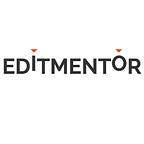What is a Hands-On Film Editing Lesson in EditMentor Like?
Launching a new product is always daunting, laborious, and exciting! But when faced with a pandemic and an overnight shift in educational methodology from in-classroom training where editing equipment is plentiful to distance learning where every student’s system is of questionable quality, your new product needs to be ready right now.
With teachers rushing to re-adjust teaching methods and find new lessons, we knew that we better hurry up and launch EditMentor, our hands-on editing training software for students.
Thousands of teachers wanted to know, how could they possibly transfer classroom instruction to an online platform? How would they monitor student work? And how would they test learned knowledge remotely? Enter EditMentor. The solution to those problems.
Benefits of EditMentor
- Interactive film curriculum, designed by leading educators
- Teacher dashboard to measure student scores on challenge exercises
- Works on any computer with Google Chrome, including Chromebooks (but not mobile)
Assembly Cut — Example Lesson
Note: The full lesson is made up of 15 challenges. Only five are discussed here. View our curriculum roadmap.
Lesson Description — A film’s story is first told through the script by the writer. The director tells the second version shot by shot during production.
The third and final version of the film story is built scene by scene and shot by shot in the editing room.
In this lesson we explore how editors start their part of the process by discovering the story, reviewing dailies, and finally building an assembly cut.
1. Discovering Story — The first challenge asks students to read a few pages of a script and answer questions about the protagonist, their goals and obstacles, and the storyworld.
2. Scene Analysis — Next, students watch the completed first scene and identify how each shot contributes new information to the story by clicking on our interactive timeline markers.
3. Scene Analysis — Students move on to scene two where they identify the obstacle that the character faces in the scene. This time there are no clues given on the timeline.
4. Watching Dailies — Now it’s time to watch the raw footage for the scene. Once a student can identify the information that each shot offers to the story, they begin practicing selecting the best takes.
In this challenge, students answer questions about what information each shot conveys. Then they compare two takes of the same shot and delete the one that isn’t as good at relaying that information to the audience.
5. Arranging Shots — Finally, students learn that the order the shots (beats) are placed in the sequence is what creates key story moments. The formula we teach is: Obstacle + Reaction = Key Moment.
Check Their Work — At the end of each challenge students can view all the answers and learn why their answers were correct, incorrect, or partially correct. Many students enjoy the review even when they answered all challenge questions correctly.
We Made it!
The launch of EditMentor was rushed due to the pandemic but the learning we gained by working with our early customers was invaluable. We are a much better product today thanks to our early launch. We couldn’t be more pleased that our product has been so widely accepted, praised and purchased by colleges, high schools and middle schools that were looking for something powerful to aide their teaching. They found it in EditMentor.
